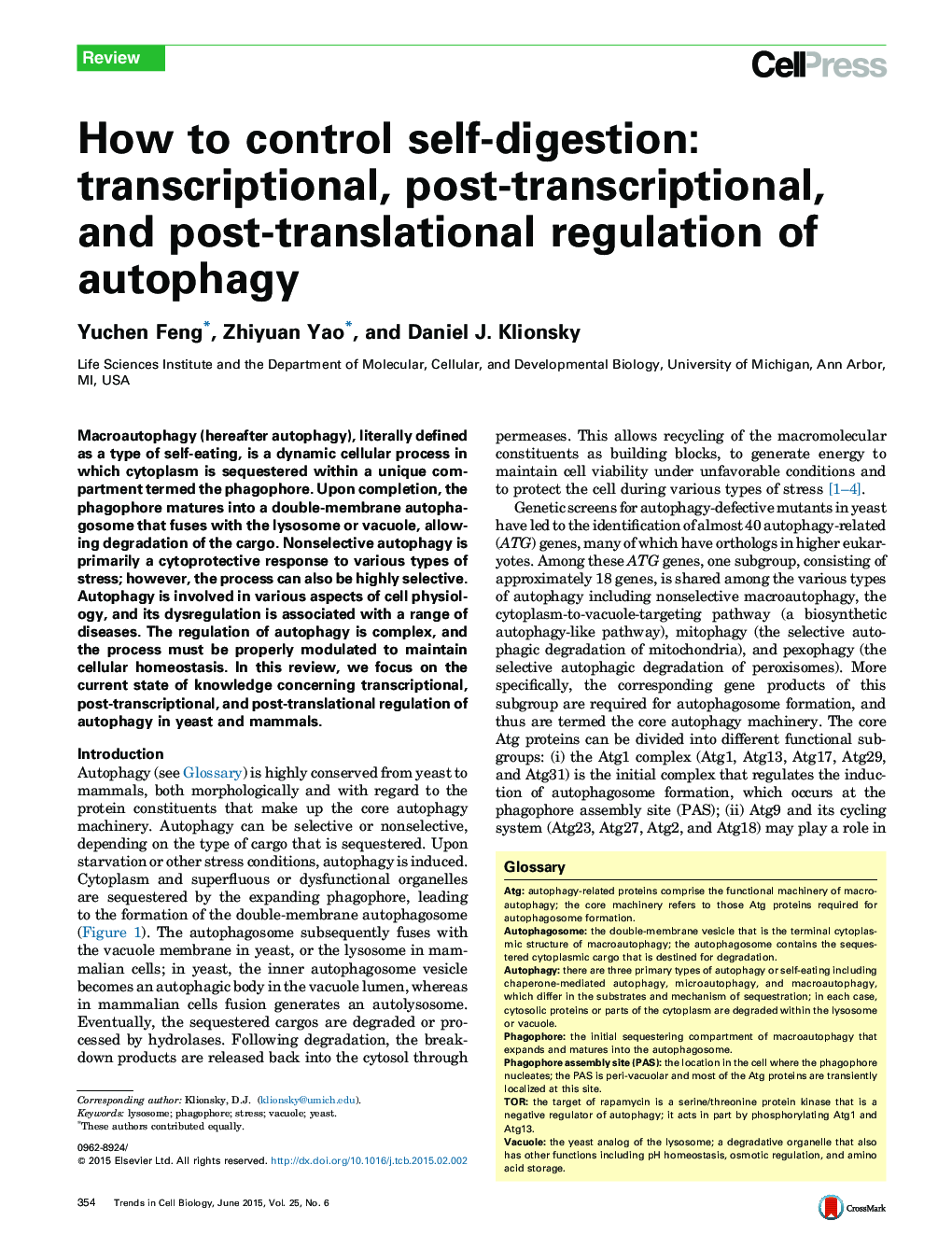| Article ID | Journal | Published Year | Pages | File Type |
|---|---|---|---|---|
| 2204374 | Trends in Cell Biology | 2015 | 10 Pages |
•Transcriptional regulation plays an essential role in modulating autophagy.•Post-transcriptional control of autophagy is mediated by miRNAs.•Autophagy post-translational modifications (PTMs) include phosphorylation and ubiquitination.•Epigenetic regulation of autophagy involves histone acetylation and methylation.
Macroautophagy (hereafter autophagy), literally defined as a type of self-eating, is a dynamic cellular process in which cytoplasm is sequestered within a unique compartment termed the phagophore. Upon completion, the phagophore matures into a double-membrane autophagosome that fuses with the lysosome or vacuole, allowing degradation of the cargo. Nonselective autophagy is primarily a cytoprotective response to various types of stress; however, the process can also be highly selective. Autophagy is involved in various aspects of cell physiology, and its dysregulation is associated with a range of diseases. The regulation of autophagy is complex, and the process must be properly modulated to maintain cellular homeostasis. In this review, we focus on the current state of knowledge concerning transcriptional, post-transcriptional, and post-translational regulation of autophagy in yeast and mammals.
